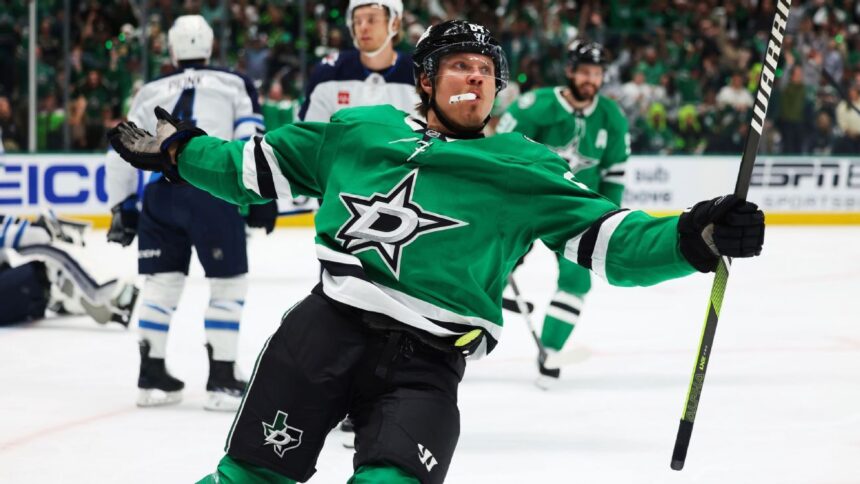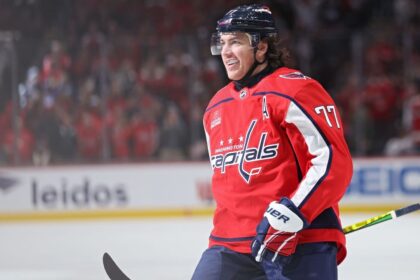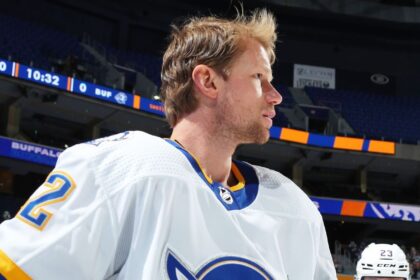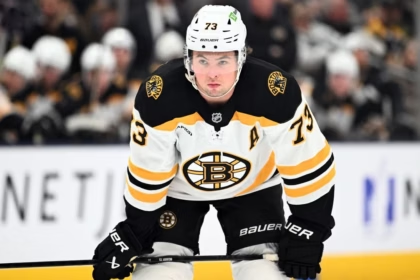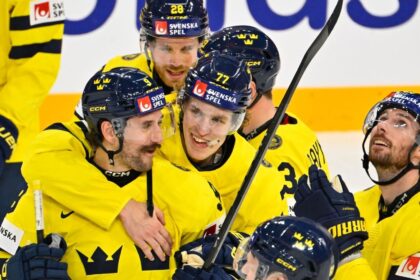The 2025 NHL Free Agency: Analysis and Ratings of the Most Notable Signings
The 2025 NHL offseason has already been a rollercoaster, with key trades, the arrival of 224 prospects through the draft, and a series of re-signings. As free agent deals continue, the Alofoke Deportes team will evaluate the most important signings, including the player’s adaptation to their new team and the terms of the contracts. Here are the most recent ratings, with the newest agreements listed first. The contract terms are expressed by year.Draft Summary
Analysis of the 224 draft picks.Ratings for the 32 teams.
July 1st
Mikael Granlund, Forward
Anaheim Ducks
Terms: Three years, $7 million AAVRating: C+
Where does it fit?
Granlund is a veteran scorer who has produced on every team he’s played for. He had an exceptional contract season last year between the San Jose Sharks and the Dallas Stars, with 22 goals and 44 assists in 83 games, including 5 goals and 13 assists on the power play. Granlund can play in all three forward positions. The Ducks may put him on the right wing in their top six, given that they already have Cutter Gauthier and Chris Kreider on the left side. If they want him as a center, it could be behind Leo Carlsson and Mason McTavish on their third line. His offense could be used anywhere in their lineup. He is one of the best playmakers available this offseason.Does it make sense?
Granlund had 21 million reasons to leave the Stars and the opportunity to play with Mikko Rantanen and Roope Hintz for a Ducks team that is still a year away from real contention. The Ducks have a disproportionate amount of cap space for next season, and they have a lot of salary cap flexibility for the second year of his contract. However, for a team trying to improve its overall defense, Granlund is not a complete player. I’m not sure if that’s the case with Granlund and I’m not sure, given how terrible the Ducks were defensively last season, that he’s a free agent that Anaheim would necessarily need to add.Corey Perry, Right Wing
Los Angeles Kings
Terms: 1 year, $2.5 million AAVRating: B+
Where does it fit?
Perry has been at this for almost two decades. He will be a depth scoring winger for the Kings, a net-front presence and a constant agitator. He collected 19 goals and 30 points in 81 games for Edmonton last season and has remained consistent in his production as he continues to stave off Father Time. Expect Kings coach Jim Hiller to find a spot for Perry in L.A.’s bottom six, where he can bring some energy along with an offensive edge.Does it make sense?
At this stage of his career, Perry should fit in perfectly with the Kings. There won’t be a lot of pressure on him to perform, but he is capable of doing so. He will make the Kings a more difficult team to face, specifically in the postseason, and that’s where L.A. is determined to be this season (for more than just one round, too). The contract is also good for the Kings. Perry will cost them at most $3.5 million (if he reaches all the bonuses in his one-year contract, which is unlikely), and if he turns out to be the differentiating factor they need, it’s all gain. This is a great time for Perry and the Kings to team up.Nate Schmidt, Defense
Utah Mammoth
Terms: 3 years, $3.5 million AAVRating: B+
Where does it fit?
Schmidt had a solid regular season and was even better during Florida’s Stanley Cup run. Schmidt can do it all (in the right spot). He can slot into their third pairing, carry a decent workload, and contribute at 5-on-5 and on special teams. He will also be a veteran presence on a young team that is still finding its way and creating an identity. While Schmidt isn’t the fastest skater, he is smart, confident, and experienced. A true trifecta.Does it make sense?
Absolutely. The Mammoth were a mid-table defensive team last season and Schmidt will help elevate the entire group. He will be an upgrade over Ian Cole and can provide a greater offensive edge than Juuso Valimaki. If Utah can protect Schmidt in the right role, he should bring a Cup champion pedigree and consistent production that improves the blue line.Ryan Lindgren, Defense
Seattle Kraken
Terms: 4 years, $4.5 million AAVRating: B
Where does it fit?
Lindgren appears to be part of a broader plan that focuses on how the Kraken can improve the defensive inconsistencies that were a chronic problem during the 2024-25 season. Last season he finished with four goals and a career-high 22 points in 72 games. Lindgren gives the Kraken another dimension they didn’t previously have and, along with two-way center Frederick Gaudreau, further establishes what the new Kraken GM, Jason Botterill, is trying to do when it comes to the team having more defensive consistency.Does it make sense?
Although there’s a role for him with the Kraken, there’s a discussion about where he exactly fits into the defensive dynamic. Lindgren could be a top-four defenseman or the number 5 for the Kraken, who could also be used to play an important role on the penalty kill, given that he has recorded more than 127 minutes of shorthanded play in each of his six full NHL campaigns.Vladislav Gavrikov, Defense
New York Rangers
Terms: 7 years, $7 million AAVRating: B+
Where does it fit?
Gavrikov is a true top-pairing shutdown defenseman. He gives the Rangers a left-right combination with Fox. Gavrikov was really solid for the Los Angeles Kings last season. He’s not the most physical defenseman, but he’s an underrated skater and plays smart in his own zone. Gavrikov was 12th on the Kings in penalty minutes per game (0:20) in 82 games.Does it make sense?
Fills a vital need for the Rangers, both to help Fox and to add veteran defensive depth on a rebuilding blue line. The contract comes in at $1.5 million annually less than that of Ivan Provorov, who just re-signed with Columbus.Brock Boeser, Right Wing
Vancouver Canucks
Terms: 7 years, $7.25 million AAVRating: B
Where does it fit?
Boeser had 40 goals in 2023-24 and had 25 last season in 75 games. He’s not the fastest type. He’s simply going to convert his opportunities and help create them in the offensive zone, especially with offense coming from high-danger areas. If Petey is going to get his game back on track, he needs a player like Boeser. If Filip Chytil is going to be an offensive force for Vancouver, he needs a player like Boeser.Does it make sense?
The situation between the Canucks and Boeser was truly strange. In the end, the fit makes sense for the Canucks. He’s a consistent scorer for a team that needs it. And while the behind-the-scenes cultural issues in Vancouver are well documented, Boeser is one of the good ones.Jake Allen, Goalkeeper
New Jersey Devils
Terms: 5 years, $1.8 million AAVRating: B+
Where does it fit?
Back in tandem with Jacob Markstrom. The Devils addressed their persistent goaltending issues in a dramatic way in 2024, first acquiring Allen from the Montreal Canadiens and then trading for Markstrom. The good news is that it worked: the New Jersey team’s save percentage went from 30th in the NHL (.886) to 11th in the league last season (.898). Allen had better numbers than Markstrom in the regular season with a save percentage of .908 and 18.4 goals saved above expected, which was ninth in the NHL. New Jersey repeats it with its veteran duo next season, giving its backup a contract with a minuscule salary cap hit but with a serious term.Does it make sense?
He does it for the Devils in the short term, obtaining a consistent tandem goalie for less than $2 million against the salary cap. It gives New Jersey a goaltending line that goes beyond the last year of Markstrom’s contract next season. The most notable part of this is Allen’s decision to stay put. There were several teams that could have used his services.Patrick Kane, Forward
Detroit Red Wings
Terms: One year, $3 million AAVRating: B
Where does it fit?
Any team that is serious about its postseason chances knows it will need proven scorers in the top six. Kane is exactly that. He was fourth on the Wings with 21 goals last season, while his 29 power-play points were tied for the second most on the roster. If they hadn’t, it’s very likely someone else would have quickly on Tuesday, knowing that players who can score like Kane are a highly sought-after commodity.
Does it make sense?
Re-signing one of the team’s most consistent forwards at 36 was critical for the reasons mentioned above. The biggest advantage the Red Wings have in re-signing Kane could be the layers associated with that advantage. Getting rid of Tarasenko’s $4.75 million contract, while signing Kane to a contract that is $1 million less than what he made last season, gives Red Wings GM Steve Yzerman $17.211 million in cap space entering free agency on Tuesday.Brad Marchand, Forward
Florida Panthers
Terms: Six years, $5.25 million AAVRating: B+
Where does it fit?
Marchand is clearly valued for everything he contributed to last season’s Stanley Cup champions, on and off the ice. Marchand was everything GM Bill Zito wanted and more in the Panthers’ run for the Stanley Cup: 10 goals and 10 assists in 20 games. Marchand saved the best for last: six goals in the Stanley Cup Final, including two game-winning goals. Marchand embodied that spirit on the ice, from his relentless tenacity to his taunting of opponents.Does it make sense?
The Panthers wanted to play with Marchand again for all these reasons, but we’ll offer one more. Letting him slide into free agency could have meant seeing him sign with division rivals Toronto Maple Leafs, a team that the Panthers themselves admit is finally
